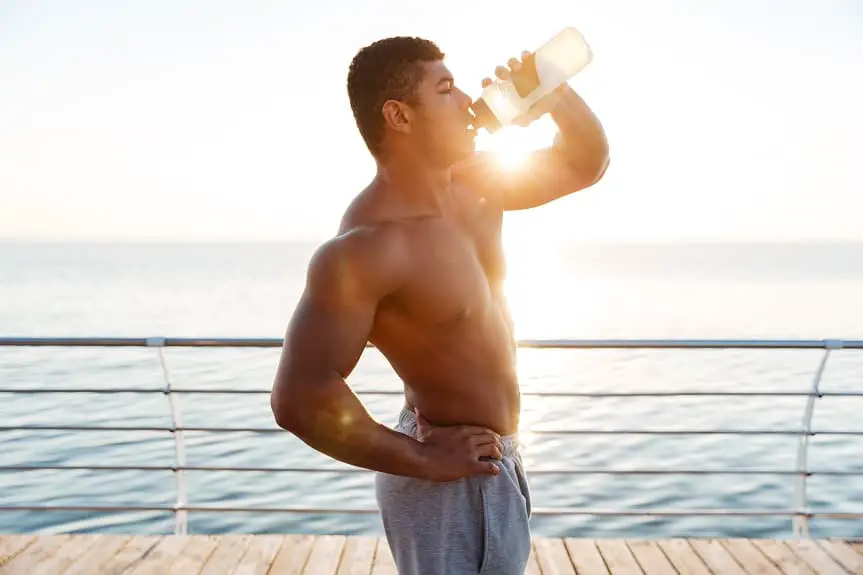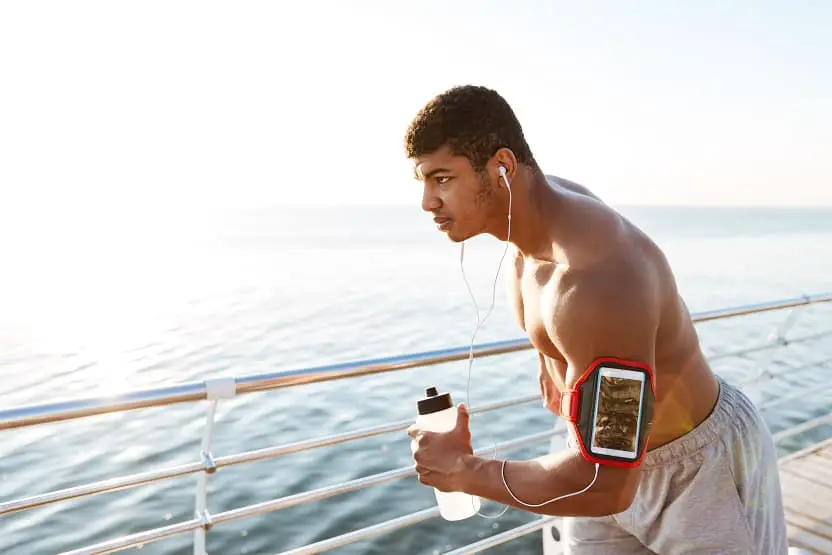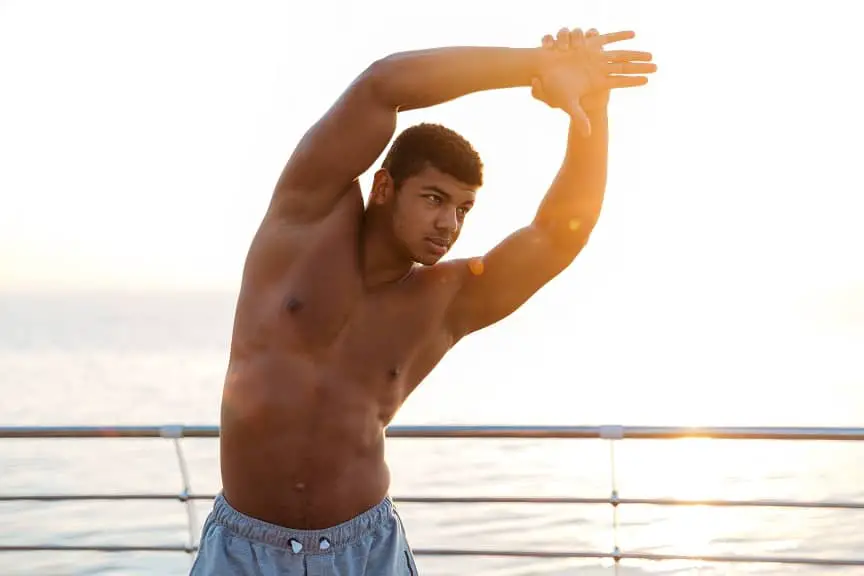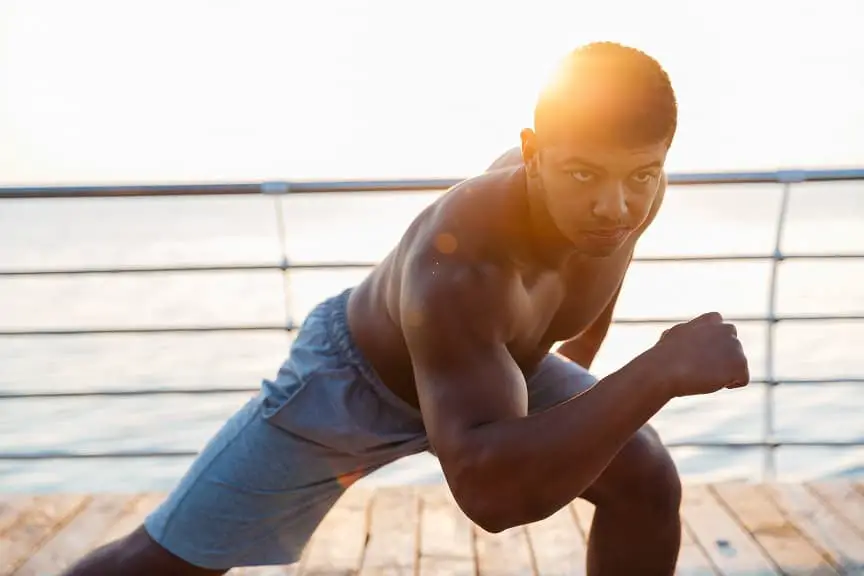As a runner, I’ve often wondered if running a marathon shirtless is okay.
The question is controversial, with some runners insisting that it’s perfectly acceptable while others argue that it’s inappropriate. So, can you run a marathon shirtless? The answer is yes, but there are some things to consider before ditching your shirt.
Table of Contents
Benefits of Running Shirtless
Improved Airflow
Running shirtless allows for improved airflow, which can be especially beneficial during hot and humid weather.
A shirt can trap heat and sweat against the skin, making it difficult to cool down while running. Removing the shirt can help improve breathability and keep the body cooler, enhancing performance and endurance.
Reduced Chafing
Chafing can be a common problem for runners, especially during long-distance runs. Running shirtless can help reduce the risk of chafing, as no seams or fabric are rubbing against the skin.
In addition, this can lead to a more comfortable and enjoyable running experience.
Increased Vitamin D Absorption
Running shirtless can also increase the amount of vitamin D the body absorbs from the sun.
Vitamin D is essential for bone health and immune function; many people do not get enough of it.
However, it is necessary to be mindful of sun exposure and apply sunscreen to protect the skin from harmful UV rays.
While running shirtless can benefit, it is essential to consider the environment and social norms. For example, running shirtless may not be appropriate in highly populated areas or during races with strict dress codes. It is also essential to listen to your body and wear clothing that makes you feel comfortable and confident while running.

Considerations for Running Shirtless
Weather Conditions
When considering running a marathon shirtless, it’s essential to consider the weather conditions on the race day. If the weather is hot and humid, running without a shirt can help keep you cool and prevent overheating.
However, if the weather is cold or windy, running shirtless can make you feel colder and increase your risk of hypothermia.
Therefore, always check the weather forecast before deciding whether to run shirtless.
Sun Protection
Running shirtless can increase your risk of sunburn, especially if you’re running for several hours in direct sunlight.
To protect your skin, it’s essential to apply sunscreen with an SPF of at least 30 before the race and reapply it every few hours.
You may also want to wear a hat or visor to protect your face from the sun.

Local Laws and Cultural Norms
Before running a marathon shirtless, it’s essential to check the local laws and cultural norms of the area where the race occurs.
In some places, running shirtless may be illegal or considered offensive. Therefore, it’s always better to err on caution and wear a shirt if you need clarification on local laws and cultural norms.
Running a marathon shirtless can be a personal choice based on weather conditions, sun protection, local laws, and cultural norms. Therefore, making an informed decision and prioritizing your safety and comfort during the race is essential.
Alternatives to Running Shirtless
Moisture-Wicking Clothing
Wearing clothing that will keep you dry and comfortable when running a marathon is essential.
Moisture-wicking clothing is designed to draw sweat away from the skin and to the fabric’s surface, where it can evaporate quickly. This type of clothing is made from synthetic materials such as polyester, nylon, or spandex.
Moisture-wicking clothing suits runners who sweat or run in hot and humid conditions.
It can help prevent chafing and irritation, and it can also help regulate body temperature.

Breathable Fabrics
Breathable fabrics are designed to allow air to flow through the material, which can help keep you cool and dry during a marathon. Some examples of breathable fabrics include cotton, bamboo, and linen.
While these fabrics may not be as effective at wicking away moisture as synthetic materials, they can still be a good option for runners who prefer natural fibers.
Be aware that cotton can become heavy and uncomfortable when wet, so better choices may exist for longer runs or hot and humid conditions.
Lightweight Clothing
Another alternative to running shirtless is to wear lightweight clothing. This can include shorts and tank tops made from lightweight materials such as mesh or nylon.
Lightweight clothing can help keep you cool and comfortable during a marathon, and it can also help reduce drag, which can improve your performance.
However, be careful to choose lightweight clothing, as it may not provide enough protection from the sun or wind.

Final Thoughts
Running a marathon shirtless isn’t something I’d consider. I don’t have the body confidence to pull that off. It would detract from the overall experience.
I once heard on a podcast that someone pinned their number to their skin with safety pins. Bleeding as he ran off from the start; not a very good idea!
Running a marathon shirtless is a personal choice that depends on various factors such as weather conditions, personal comfort, and cultural norms.
While some runners may run shirtless to stay cool and comfortable during a race, others may prefer lightweight, moisture-wicking clothing to help regulate their body temperature and prevent chafing.
Ultimately, the decision to run shirtless should be based on individual preferences and considerations and not influenced by societal pressures or expectations.
Frequently Asked Questions
Is it okay to run a marathon shirtless?
Yes, it is okay to run a marathon shirtless, but it is essential to consider factors such as weather conditions, personal comfort, and cultural norms before making the decision.
Will running shirtless help me stay cool during a marathon?
Running shirtless can help you stay cool during a marathon by allowing sweat to evaporate more efficiently and reducing the amount of fabric that can trap heat.
Can running shirtless cause chafing?
Not in the upper body, as you will be wearing no shirt. Ladies may still consider chafing issues associated with their sports bras.
Are there any rules against running shirtless in a marathon?
Most marathons do not have specific rules against running shirtless, but checking the race guidelines before deciding is essential.
Can running shirtless cause sunburn?
Running shirtless can increase the risk of sunburn, especially if you are running in direct sunlight. To prevent sunburn, apply sunscreen to exposed skin before the race.
Should I wear a shirt if it is raining during the marathon?
If it is raining during the marathon, wearing a shirt can help keep you warm and prevent hypothermia. However, running shirtless may be a better option if the rain is light and the temperature is warm.
Is it appropriate to run shirtless in all cultures?
Running shirtless may not be appropriate in all cultures, so it is essential to research cultural norms before deciding.
Can running shirtless affect my race time?
Maybe.. Running shirtless can affect your race time by reducing the amount of fabric that can slow you down and increase your range of motion.
What should I do if I feel uncomfortable running shirtless?
If you feel uncomfortable running shirtless, wear lightweight, moisture-wicking clothing that can help regulate your body temperature and prevent chafing.
Can running shirtless increase the risk of injury?
Running shirtless does not necessarily increase the risk of injury, but wearing appropriate footwear and clothing is essential to prevent blisters, chafing, and other damage.

